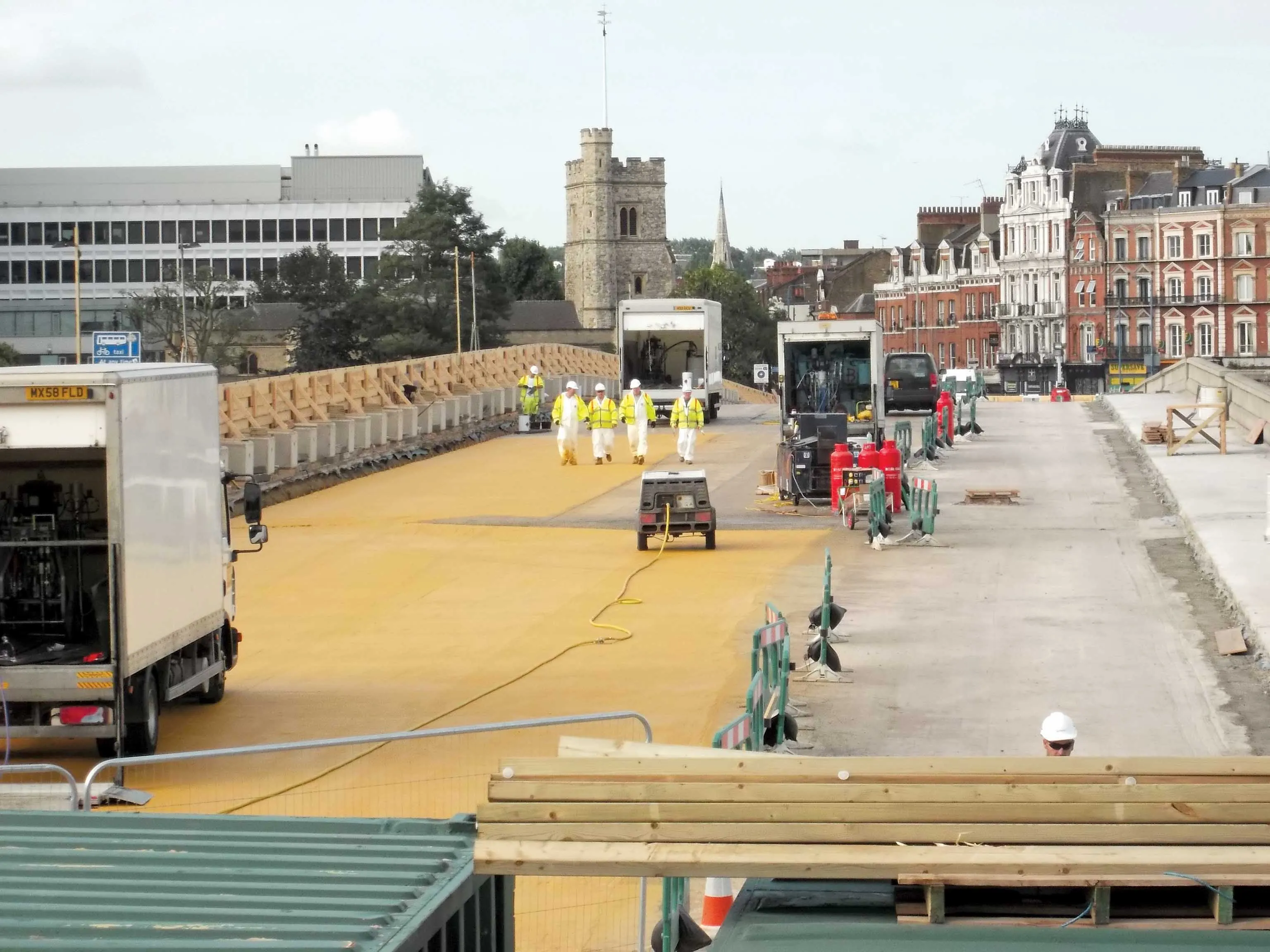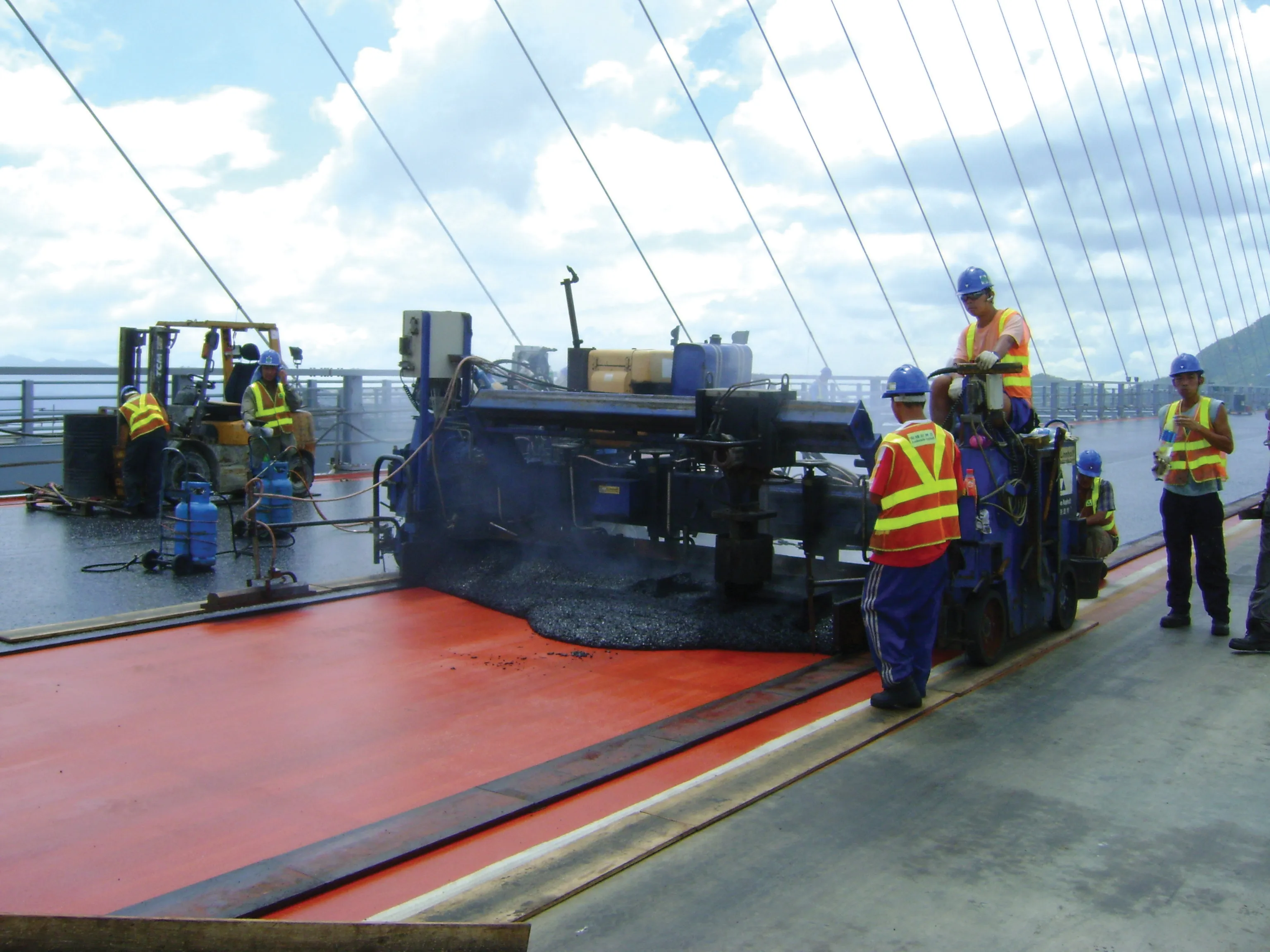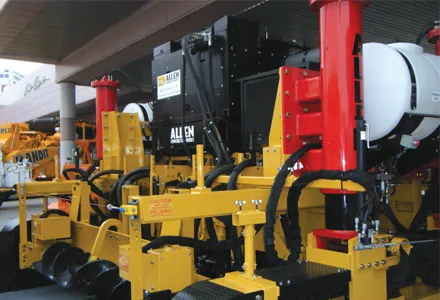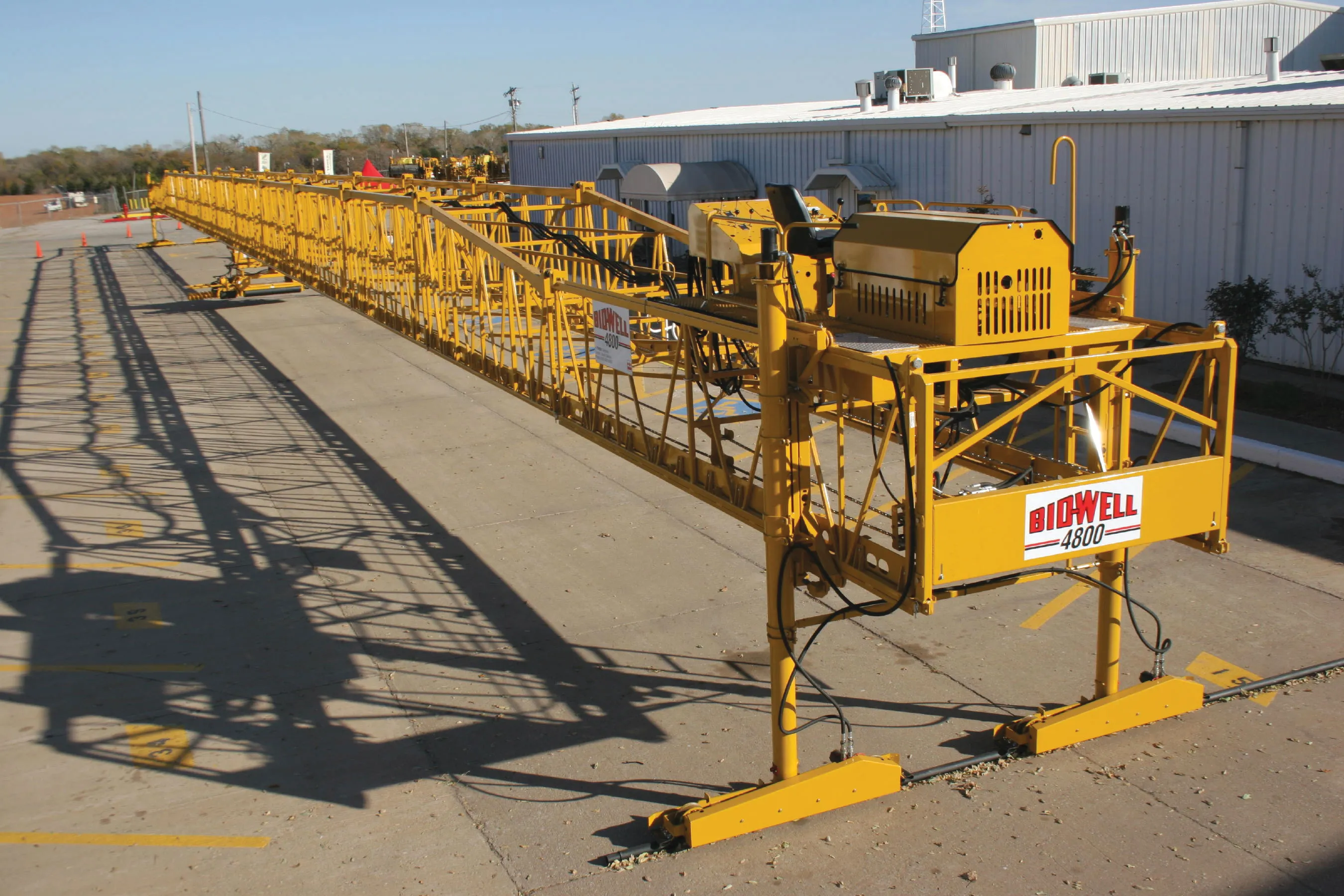An array of new bridge refurbishment and repair solutions are available – Mike Woof writes
Around the world there are many bridges requiring repairs or refurbishment, and there is a ready market for novel solutions to upgrade existing structures. New developments offer quicker and more efficient ways to improve bridge surfaces and structural performance and add new life to ageing designs.
Spancrete is broadening the availability of its novel precast building solutions worldwide by offering these to th
July 15, 2015
Read time: 6 mins

An array of new bridge refurbishment and repair solutions are available – Mike Woof writes
Around the world there are many bridges requiring repairs or refurbishment, and there is a ready market for novel solutions to upgrade existing structures. New developments offer quicker and more efficient ways to improve bridge surfaces and structural performance and add new life to ageing designs.
8103 Spancrete is broadening the availability of its novel precast building solutions worldwide by offering these to the bridge construction market in India. In a partnership with SP Precast Solutions India Private (MBIPL) and MAAD Building Innovations Group, Spancrete has supplied the first Spancrete Production System in India.
The MAAD Building Innovations in India features the Spancrete GT-120 precast production system. The new plant provides Spancrete Brand Hollowcore slabs and other precast elements to residential, commercial and industrial development projects for the MAAD Group’s Realty Development department as well as other companies. The plant is owned and operated through a joint venture company established between MAAD Building Innovations (MBIPL) Group and SP Precast Solutions India.
The MBIPL factory has incorporated the Spancrete GT-120 production system, featuring six casting lines, 200m each, ensuring high volume and the efficient output of Hollowcore 1.2m wide slabs and wall panels in thickness ranging from 10cm to 40cm. Additional precast construction forms were provided by Spancrete to deliver a total structural solution to the India market.
The GT-120 machine system is capable of operating outdoors and is self-feeding, requiring no additional automated material delivery systems and other costly infrastructure. The plant is designed to be mobile, allowing the owners the flexibility to move the entire operation when required. A novel feature of the MIBPL plant is the minimal infrastructure required to achieve high volume production.
To assist Indian customers, Spancrete transfers knowledge from its USA operations, including engineering, estimating, plant operation, quality control, transport and installation capabilities. Spancrete has teamed with Precision Precast Solutions (PPS) to provide support related to ensuring precast design compliance with local Indian building codes.
Meanwhile a £1.5 million project to refurbish and repair Putney Bridge in south-west London has incorporated advanced materials from waterproofing specialist,2314 Stirling Lloyd Polychem.
The Grade II listed bridge that crosses the Thames has undergone extensive renovation to protect it against the water penetration that had contributed to poor road and pavement surfaces. Once all the original asphalt surfacing had been removed, assessment of the bridge structure by Wandsworth Council's in-house engineering consultancy revealed that the existing polyurethane waterproofing system had de-bonded and delaminated from the concrete substrate that was in very poor condition and leaking. In addition, once the in-situ granite kerbs were removed, areas with loose, friable material were exposed that needed to be replaced with a robust, concrete detail.
Stirling Lloyd Polychem offered an immediate, cost-effective solution for both the waterproofing and these areas. It recommended the use of its Metaset Concrete, a rapid cure concrete repair material for the damaged areas and deeply textured substrate, and its Eliminator system to provide a seamless bridge deck waterproofing. These products were subsequently specified by Wandsworth Council and Metaset Concrete was applied to some 1,000m² and Eliminator to the 4,000m² deck.
Metaset Concrete is a high-strength, multi-purpose material that cures rapidly within two hours across a wide range of temperatures and is ready to accept loads within two to four hours. The Eliminator is a cold liquid spray-applied bridge deck waterproofing membrane based on Stirling Lloyd's advanced resin-based technology.
On-site, the existing surfacing and waterproofing, along with the kerb detail, were removed by main contractor, FM2329 Conway. The extensive bridge repair work and spraying of the waterproofing required was carried out by Metrail Construction, one of Stirling Lloyd Polychem's Eliminator Authorised Contractors.
Initially, until the excavation and removal works had taken place, there was no way to ascertain the full extent of the repair works required and the additional time and cost implications these would have on the project. With Putney Bridge being a major route across the Thames, minimising inconvenience and disruption to commuters and tourists was imperative and, as a consequence, the repair and waterproofing systems' ease of application and rapid cure times were key considerations in their specification.
And1222 Terex Bid-Well said that its 3600 model is versatile and can be used for a wide array of bridge deck paving applications. Its single spud vibrator has an improved design of the paving carriage, which enables the 3600 paver to complete standard duty slab-on-grade for bridge decks.
The unit offers a variety of standard paving widths ranging from 2.4 to 26.1m. Its 5.5m end segments offer 4.6m of leg travel, so the paver can offer up to 9.1m variable width paving. The 3600 paver’s new paving carriage design features segmented upper and lower sections, similar to the larger 4800 paver design, allowing the upper carriage to stay cleaner than previous designs to improve carriage longevity. The heavy-duty design positions the drag pan mounting system on the upper carriage to better withstand the weight and pull of dual drag-pan configurations.
A new universal power crown adjuster for the 3600 paver makes quick and efficient crown adjustments, whether paving inline or at a skew. The update allows the crown adjuster to be mounted inline or moved to an adjacent hinge point opposite to the other adjuster, giving operators the ability to quickly adjust the crown when paving at a skew.
Equipped with the exclusive swing leg design, the paver offers zero clearance paving, required when paving in tight applications such as rehabilitation work and bridge deck overlays. Optional, heavy-duty 156mm diameter legs provide up to 1.2m of hydraulic raising/lowering to assist with machine grade set-up. When paving at cross slopes greater than 4%, the available pivot leg configuration brings the paver to a true vertical operating position, reducing side forces placed on the rail system and eliminating the need for additional shoring.
The recently introduced LED lighting system increases machine visibility during night-time paving. The integrated lighting system is powered directly by the machine’s engines, eliminating the need for a generator. Up to 12 LED lights can be positioned virtually anywhere on the machine’s frame and up to four LED lights can be mounted directly to the paving carriage.
The paving carriage is powered by its own 15kW engine, while an optional 18.6kW engine offers additional power for smoothly operating the paving carriage equipped with a spud vibrator. The carriage’s exclusive Rota-Vibe system generates up to 83.3Hz vibration to consolidate the top 63.5mm of the slab, reducing the chance for chemical penetration through the surface down to the rebar.
Around the world there are many bridges requiring repairs or refurbishment, and there is a ready market for novel solutions to upgrade existing structures. New developments offer quicker and more efficient ways to improve bridge surfaces and structural performance and add new life to ageing designs.
The MAAD Building Innovations in India features the Spancrete GT-120 precast production system. The new plant provides Spancrete Brand Hollowcore slabs and other precast elements to residential, commercial and industrial development projects for the MAAD Group’s Realty Development department as well as other companies. The plant is owned and operated through a joint venture company established between MAAD Building Innovations (MBIPL) Group and SP Precast Solutions India.
The MBIPL factory has incorporated the Spancrete GT-120 production system, featuring six casting lines, 200m each, ensuring high volume and the efficient output of Hollowcore 1.2m wide slabs and wall panels in thickness ranging from 10cm to 40cm. Additional precast construction forms were provided by Spancrete to deliver a total structural solution to the India market.
The GT-120 machine system is capable of operating outdoors and is self-feeding, requiring no additional automated material delivery systems and other costly infrastructure. The plant is designed to be mobile, allowing the owners the flexibility to move the entire operation when required. A novel feature of the MIBPL plant is the minimal infrastructure required to achieve high volume production.
To assist Indian customers, Spancrete transfers knowledge from its USA operations, including engineering, estimating, plant operation, quality control, transport and installation capabilities. Spancrete has teamed with Precision Precast Solutions (PPS) to provide support related to ensuring precast design compliance with local Indian building codes.
Meanwhile a £1.5 million project to refurbish and repair Putney Bridge in south-west London has incorporated advanced materials from waterproofing specialist,
The Grade II listed bridge that crosses the Thames has undergone extensive renovation to protect it against the water penetration that had contributed to poor road and pavement surfaces. Once all the original asphalt surfacing had been removed, assessment of the bridge structure by Wandsworth Council's in-house engineering consultancy revealed that the existing polyurethane waterproofing system had de-bonded and delaminated from the concrete substrate that was in very poor condition and leaking. In addition, once the in-situ granite kerbs were removed, areas with loose, friable material were exposed that needed to be replaced with a robust, concrete detail.
Stirling Lloyd Polychem offered an immediate, cost-effective solution for both the waterproofing and these areas. It recommended the use of its Metaset Concrete, a rapid cure concrete repair material for the damaged areas and deeply textured substrate, and its Eliminator system to provide a seamless bridge deck waterproofing. These products were subsequently specified by Wandsworth Council and Metaset Concrete was applied to some 1,000m² and Eliminator to the 4,000m² deck.
Metaset Concrete is a high-strength, multi-purpose material that cures rapidly within two hours across a wide range of temperatures and is ready to accept loads within two to four hours. The Eliminator is a cold liquid spray-applied bridge deck waterproofing membrane based on Stirling Lloyd's advanced resin-based technology.
On-site, the existing surfacing and waterproofing, along with the kerb detail, were removed by main contractor, FM
Initially, until the excavation and removal works had taken place, there was no way to ascertain the full extent of the repair works required and the additional time and cost implications these would have on the project. With Putney Bridge being a major route across the Thames, minimising inconvenience and disruption to commuters and tourists was imperative and, as a consequence, the repair and waterproofing systems' ease of application and rapid cure times were key considerations in their specification.
And
The unit offers a variety of standard paving widths ranging from 2.4 to 26.1m. Its 5.5m end segments offer 4.6m of leg travel, so the paver can offer up to 9.1m variable width paving. The 3600 paver’s new paving carriage design features segmented upper and lower sections, similar to the larger 4800 paver design, allowing the upper carriage to stay cleaner than previous designs to improve carriage longevity. The heavy-duty design positions the drag pan mounting system on the upper carriage to better withstand the weight and pull of dual drag-pan configurations.
A new universal power crown adjuster for the 3600 paver makes quick and efficient crown adjustments, whether paving inline or at a skew. The update allows the crown adjuster to be mounted inline or moved to an adjacent hinge point opposite to the other adjuster, giving operators the ability to quickly adjust the crown when paving at a skew.
Equipped with the exclusive swing leg design, the paver offers zero clearance paving, required when paving in tight applications such as rehabilitation work and bridge deck overlays. Optional, heavy-duty 156mm diameter legs provide up to 1.2m of hydraulic raising/lowering to assist with machine grade set-up. When paving at cross slopes greater than 4%, the available pivot leg configuration brings the paver to a true vertical operating position, reducing side forces placed on the rail system and eliminating the need for additional shoring.
The recently introduced LED lighting system increases machine visibility during night-time paving. The integrated lighting system is powered directly by the machine’s engines, eliminating the need for a generator. Up to 12 LED lights can be positioned virtually anywhere on the machine’s frame and up to four LED lights can be mounted directly to the paving carriage.
The paving carriage is powered by its own 15kW engine, while an optional 18.6kW engine offers additional power for smoothly operating the paving carriage equipped with a spud vibrator. The carriage’s exclusive Rota-Vibe system generates up to 83.3Hz vibration to consolidate the top 63.5mm of the slab, reducing the chance for chemical penetration through the surface down to the rebar.









